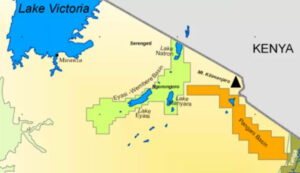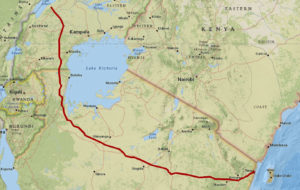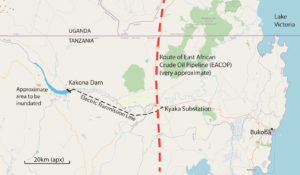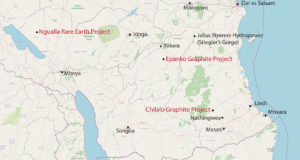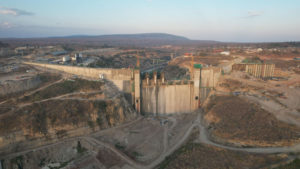by Ben Taylor
Further delays to LNG plant
Negotiations for the development of Tanzania’s proposed liquefied natural gas (LNG) export plant have been delayed by proposed government changes to a financial agreement reached last year, according to sources both in government and in the companies involved.
The long-delayed project, with an expected budget of USD $42 billion, is a major part of the infrastructure required to capitalise on the full potential of Tanzania offshore natural gas resources.
The government and investors announced in May 2023 that they had completed negotiations on the project. The government said at the time that cabinet would review the agreements the following month, but they have not yet been approved.
As of May 2024, it was reported that the Attorney General, Eliezer Feleshi, had raised queries. These required re-opening discussions with the investors, Equinor and Shell as joint operators and Exxon Mobil, Pavilion Energy, Medco Energi and Tanzania’s national oil company TPDC as partners.
Sources told The Citizen newspaper that the government was still weighing various contract terms. This reportedly includes a proposal from the companies involved that proceeds from the project be banked by foreign financial institutions, as well as withholding tax exemptions and using foreign insurance companies.
Head of communications for Equinor Tanzania, Genevieve Kasanga, said that Equinor and Shell, on behalf of the Tanzania LNG partners, initialled fully termed agreements with the Tanzanian government in May 2023. “Since then, the progress has indeed been slower than we expected,” she said.
Government spokesperson, Mobhare Matinyi said Tanzania was still interested in working with the group of investors, but said that the government was proposing changes to the initialled agreement that would “ensure that truly both sides benefit fairly in the whole deal.”
“We hope that our experts and officials will conclude the amendments sooner than later to allow this important project to go ahead,” he added.
A source from one of the investors said that the proposal “completely blew the project economics out of the water”.
The US Ambassador to Tanzania, Mr Michael Battle, told The Citizen that he had met with the investors, and “they said they would meet again to negotiate the issues that were raised to satisfy both the Tanzanian side and the investors.”
It is now more than two years since President Samia Suluhu Hassan witnessed the signing of the preliminary agreement for the project HGA in June 2022. This was signed between the government on one side and Shell and Equinor companies which are the main partners in the implementation of the project.
Tanzania currently boasts 57.54 trillion cubic feet of natural gas reserves located both onshore and beneath the Indian Ocean.
Gas conversion plant in the pipeline?
A Canadian firm, Rocky Mountain GTL, reportedly has plans to build a $420 million plant in Tanzania that will produce diesel and jet fuel from natural gas.
“Once the project is up and running, Rocky Mountain GTL’s technology will supply Tanzania with diesel and jet fuel and will also be able to produce naphtha,” said a representative of the firm.
Naphtha is the main ingredient used to lighten heavy oil in pipelines, and the plant would also produce by-products such as hydrogen fuel.
According to initial plans, the plant could be completed within two years and will at first produce 2,500 barrels of fuel per day.
“Through this project, Tanzania will be the first country in Africa to sell jet fuel and diesel to neighbouring countries. This is a significant step that will also lower the prices of these two important sources of energy,” said the spokesman.
Tanzania faces court case over natural gas dispute
A Canada-listed gas development company from the British Virgin Islands, Orca Energy Group Inc, has filed a USD $1.2 billion (TSh 3.2 trillion) claim against the United Republic of Tanzania and the Tanzania Petroleum Development Corporation (TPDC).
This action, initiated by Orca’s wholly-owned subsidiaries PanAfrican Energy Tanzania (PAET) and Pan African Energy Corporation Mauritius (PAEM), highlights growing tensions over alleged breaches of contractual and investment treaty obligations.
The dispute arises from TPDC’s rejection of PAET’s proposed commercial terms for Additional Gas (AG) and a new gas sales agreement. PAET contends that these actions breach their contractual rights and expectations and is seeking compensation exceeding $1.2 billion (TSh
3.2 trillion).
The central issue revolves around the Songo Songo Development License, granted to TPDC in 2001 for the development of the Songo Songo Field.
The agreement, which includes the Production Sharing Agreement (PSA) and the Gas Agreement (GA), was set to deliver Protected Gas (PG) until the end of July 2024, primarily for power generation at the Ubungo complex near Dar es Salaam.
The Notice of Dispute calls for negotiations with the Tanzanian government and TPDC, with arbitration proceedings expected if a resolution is not reached within the specified timeframes.
Speaking to The Citizen newspaper in early August, Solicitor General Boni Luhede stated that the parties now have six months to resolve the dispute amicably. “If not settled,” he explained, “arbitration proceedings will be instituted.”
Separately, in July, Tanzania reached a settlement agreement with Indiana Resources Limited, resolving a lengthy dispute over the expropriation of the Ntaka Hills Nickel Project. The government agreed to pay a total of USD $90 million to Indiana Resources and its associated entities, marking the end of nearly seven years of arbitration at the International Centre for Settlement of Investment Disputes (ICSID), a World Bank division.
And in October 2023, Tanzania settled with Canadian mining company Winshear Gold Corp, paying $30 million (TSh 75 billion) following a dispute over the expropriation of its SMP Gold Project in southwest Tanzania, originally seeking more than three times this amount in compensation.
Tanzania aims to become Africa’s leading graphite producer
Tanzania is working to become Africa’s largest graphite producer, according to the Minister for Minerals, Antony Mavunde. Currently, Tanzania contributes only 0.6% of Africa’s graphite production, well behind Madagascar (13%) and Mozambique (10%).
However, Mr Mavunde, said that if the ten companies that currently hold graphite mining licenses start production, Tanzania will surpass the two and become Africa’s leading producer.
Graphite is used to make pencils, lubricants, crucibles, foundry facings, polishes, brushes for electric motors, and the cores of nuclear reactors. It has high thermal and electrical conductivity that makes it a key part of steelmaking, where it is used as electrodes in electric arc furnaces.

